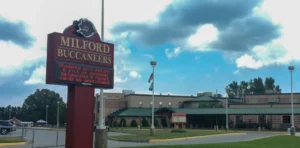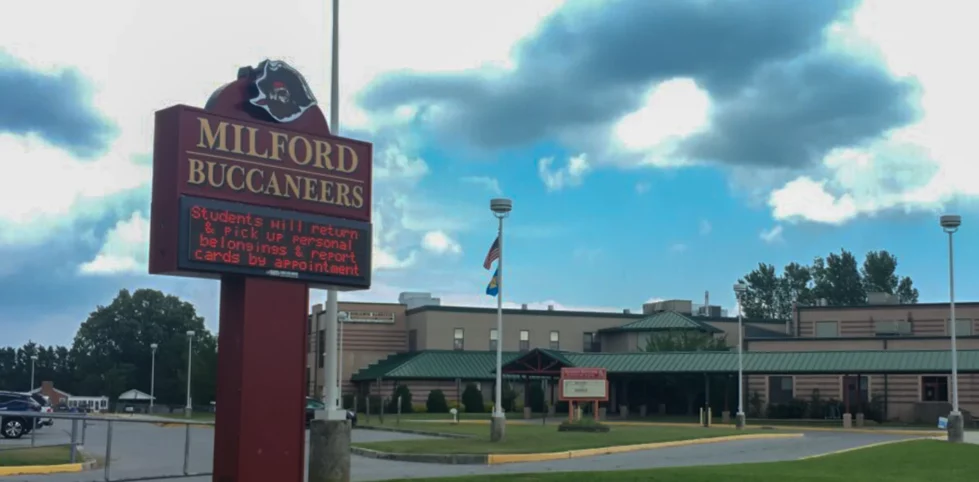

Milford’s school board revised its code of conduct Monday, deleting restorative practices from the text.
In opposition to the wishes of some residents, the Milford School District’s board voted Monday night to strike restorative practices from its student code of conduct.
Restorative practice is a method that aims to build and strengthen community relationships.
Instead of focusing on solely disciplining a child for their behavior, restorative practices aim to improve their behavior and evaluate the root causes of inappropriate actions.
Practical examples of restorative justice include circle discussions or conflict-resolution conferences. It usually emphasizes communication among all parties involved in an incident.
Although restorative practices have been flushed from the code, said Board Member Matt Bucher, the board in no way is condemning the use of restorative practices.
Rather, it was problematic because the requirements of it weren’t clear enough in code, which made it difficult for teachers to consistently utilize and caused confusion for the community.
The student code of conduct had the following clause added in summer 2022:
“Milford School District believes it is important for all students and staff to build positive relationships with one another as this produces the best academic, social and emotional outcomes. Restorative practices proactively focus on relationships and increasing students’ sense of belonging. The practices include deliberate and intentional tools and strategies that facilitate the building of healthy relationships. Teachers and staff are encouraged to use practices such as social-emotional learning (SEL) supports and classroom management strategies to build student understanding and promote healthy relationships. Restorative practices also include a process of healing when a harm occurs between individuals. This is essential to restoring healthy relationships with the understanding that harm-doers should be held accountable for and take an active role in repairing the harm they created.”
The board voted unanimously to delete the section from code.
PREVIOUS DISCUSSION: Student Code of Conduct discussed at school board
“This is not always an easy path, but it can be effective if there is a basic belief that our students deserve to be seen as active participants in their behavior and consequences,” one woman said, supporting restorative practices.
She pointed out that last year, the board voted five to one to add the section about restorative practice.
2022 VOTE TO ADD RESTORATIVE PRACTICES: Changes made to MSD Student Code of Conduct
The other speaker who gave public comment said she wanted restorative practices to remain in the code of conduct.
Bucher and board member Adam Brownstein stressed that the language in both the elementary (kindergarten through fifth grade) and secondary (sixth through twelfth grade) student code of conducts had consistent language to avoid confusion.
There was little discussion among board members about the revisions in the meeting, but afterwards, Bucher said that over the past three years, the district’s climate and discipline has been the primary topic of concern for parents and teachers.
“Lack of order, bullying, failure to follow up on consequences as outlined in the previous code have all been reported,” he said.
The restorative practices strategy, he said, was never part of the “disciplinary matrix” and sat by itself, which caused confusion among staff about what consequences were and what practices were expected for discipline.
“This was observed on many occasions, and continuity, morale, and teacher satisfaction suffered for it,” he said. “Really, front line teachers have been using restorative techniques as long as there have been classrooms, and some things are simply “common sense.”
He said teachers are not prohibited from maintaining order, authority and an environment conducive to learning for all students in their own classrooms by the means and techniques that work for them.
“We are here to empower teachers to do the work of educating, especially when the work is difficult,” he said.
There were some technical corrections made as well to align the two student codes of conduct.
“Milford administration is committed to to training and reinforcing the responsibilities we as a district have to everyone involved, to maintain awareness of the code, to support teachers and administrators when they enforce the code,” he said, “and to provide an orderly and safe atmosphere in our school properties that aids, not hinders, our mission to provide the community with educated, well-rounded, productive citizens.


Raised in Doylestown, Pennsylvania, Jarek earned a B.A. in journalism and a B.A. in political science from Temple University in 2021. After running CNN’s Michael Smerconish’s YouTube channel, Jarek became a reporter for the Bucks County Herald before joining Delaware LIVE News.
Share this Post



